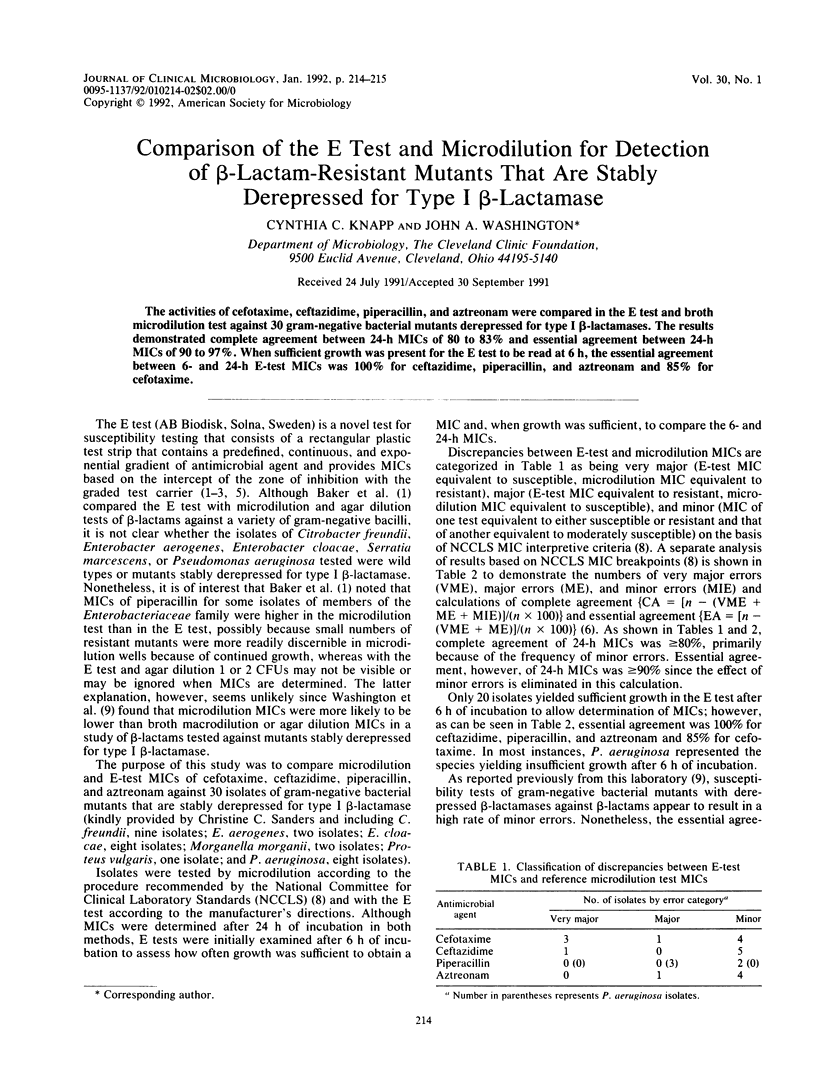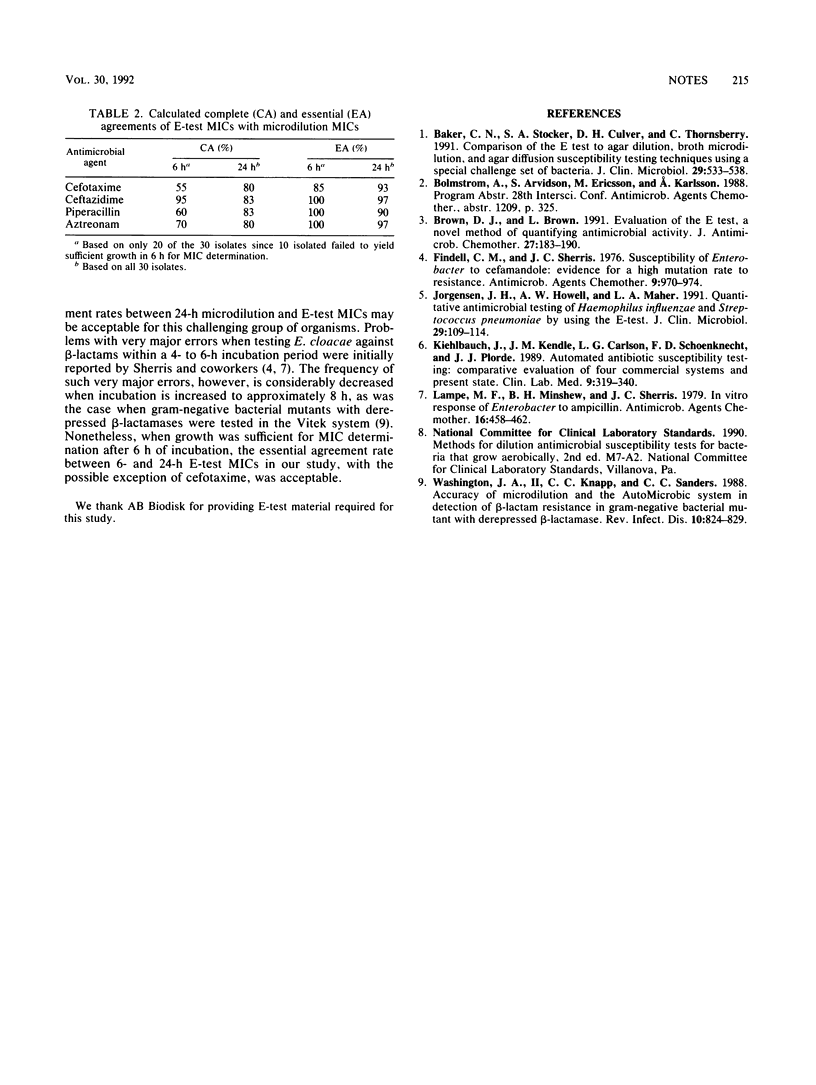Abstract
The activities of cefotaxime, ceftazidime, piperacillin, and aztreonam were compared in the E test and broth microdilution test against 30 gram-negative bacterial mutants derepressed for type I beta-lactamases. The results demonstrated complete agreement between 24-h MICs of 80 to 83% and essential agreement between 24-h MICs of 90 to 97%. When sufficient growth was present for the E test to be read at 6 h, the essential agreement between 6- and 24-h E-test MICs was 100% for ceftazidime, piperacillin, and aztreonam and 85% for cefotaxime.
Full text
PDF

Selected References
These references are in PubMed. This may not be the complete list of references from this article.
- Baker C. N., Stocker S. A., Culver D. H., Thornsberry C. Comparison of the E Test to agar dilution, broth microdilution, and agar diffusion susceptibility testing techniques by using a special challenge set of bacteria. J Clin Microbiol. 1991 Mar;29(3):533–538. doi: 10.1128/jcm.29.3.533-538.1991. [DOI] [PMC free article] [PubMed] [Google Scholar]
- Brown D. F., Brown L. Evaluation of the E test, a novel method of quantifying antimicrobial activity. J Antimicrob Chemother. 1991 Feb;27(2):185–190. doi: 10.1093/jac/27.2.185. [DOI] [PubMed] [Google Scholar]
- Findell C. M., Sherris J. C. Susceptibility of Enterobacter to cefamandole: evidence for a high mutation rate to resistance. Antimicrob Agents Chemother. 1976 Jun;9(6):970–974. doi: 10.1128/aac.9.6.970. [DOI] [PMC free article] [PubMed] [Google Scholar]
- Jorgensen J. H., Howell A. W., Maher L. A. Quantitative antimicrobial susceptibility testing of Haemophilus influenzae and Streptococcus pneumoniae by using the E-test. J Clin Microbiol. 1991 Jan;29(1):109–114. doi: 10.1128/jcm.29.1.109-114.1991. [DOI] [PMC free article] [PubMed] [Google Scholar]
- Kiehlbauch J., Kendle J. M., Carlson L. G., Schoenknecht F. D., Plorde J. J. Automated antibiotic susceptibility testing: comparative evaluation of four commercial systems and present state. Clin Lab Med. 1989 Jun;9(2):319–340. [PubMed] [Google Scholar]
- Lampe M. F., Minshew B. H., Sherris J. C. In vitro response of Enterobacter to ampicillin. Antimicrob Agents Chemother. 1979 Oct;16(4):458–462. doi: 10.1128/aac.16.4.458. [DOI] [PMC free article] [PubMed] [Google Scholar]
- Washington J. A., 2nd, Knapp C. C., Sanders C. C. Accuracy of microdilution and the AutoMicrobic System in detection of beta-lactam resistance in gram-negative bacterial mutants with derepressed beta-lactamase. Rev Infect Dis. 1988 Jul-Aug;10(4):824–829. doi: 10.1093/clinids/10.4.824. [DOI] [PubMed] [Google Scholar]


